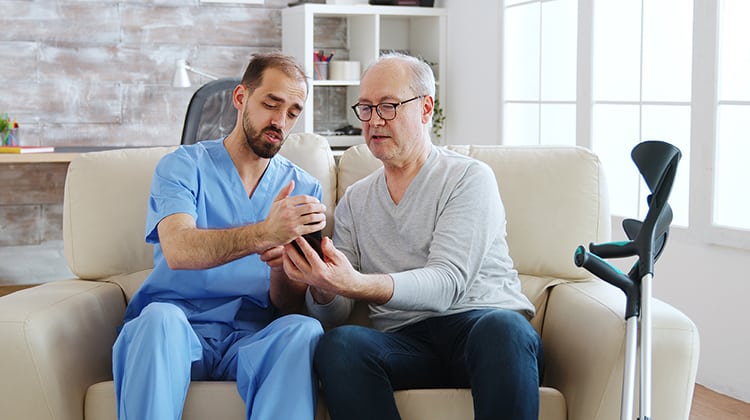Telehealth adoption accelerated due to the pandemic. At this juncture, many organizations recognize that telehealth is “here to stay” and are further embedding virtual care into their care model. Learn how to further integrate virtual care into the deliver of care post-pandemic:
Position Virtual Care as VIP Care
To better engage patients as partners, agencies continuing to use telehealth beyond the pandemic to elevate the patient experience. Patients’ wishes and needs change throughout the episode of care. With virtual care, agencies can address these changes in an immediate manner and make every patient feel like a VIP by providing patients with the answers, assistance and assurance they need and want.
Do More than Just Virtual Visits
Virtual care is more than just virtual visits. The term encompasses the use of technology to communicate and connect with patients, family caregivers, and colleagues. Virtual care also includes additional ways to strengthen engagement and collaboration post-pandemic:
- Secure Messaging: ePHI can be safely and securely communicated via secure messaging to ensure that wound photos and other patient info are shared in an encrypted, HIPAA-compliant environment.
- Condition Management: Condition-specific messaging can be sent to patients to strengthen their understanding of their condition and their role in adherence and overall self-care.
- Remote Patient Monitoring: Patients can easily share their vital signs using Bluetooth-enabled devices and their smartphones or tablets so home health clinicians can better monitor and manage their patients on key measures.
- Assessments: Agencies can request that patients complete digital assessments in order to track patient progress between scheduled interactions.
Use Virtual Care as a Differentiator with Referral Partners
Strengthening relationships with referral sources requires require proving demonstrated outcomes such as deeper patient engagement, better medication adherence, enhanced patient satisfaction, and ultimately, reduced readmissions. Agencies are able to position themselves as trusted partners by using virtual care to achieve these outcomes by:
- Conducting more frequent touchpoints with patients throughout the episode of care
- Reminding patients to continue taking prescribed medication as directed and following through on lifestyle, nutrition, and exercise recommendations
- Providing on-demand access for patients (and their family caregivers) if one’s condition changes or new issues emerge
Embrace the Hybrid Care Model
Home health and hospice organizations need to balance in-person care with virtual care as post-acute care moves towards a hybrid model. Smart agencies are making hybrid care a natural part of the process – and bringing it forth to interested patients, caregivers, and physicians before the start of care.

